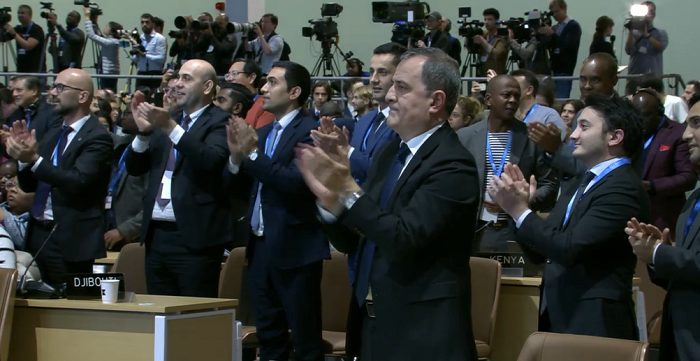At a somewhat fractious UN Climate Conference (COP29) dominated by finance, the final agreement in Baku, Azerbaijan saw developed countries pledge to “take the lead” in raising $300 billion annually for developing countries by 2035.

This is up from the $100 billion a year that was pledged in 2009. It was also agreed that developed countries would “secure efforts” to scale up finance to developing countries from public and private sources to $1.3 trillion a year by 2035.
“COP29 has now secured a foundation on which we must now rapidly build. However, we must be clear, ambition and promises are only as good as the action and delivery that backs them up,” said Inger Andersen, Executive Director of the United Nations Environment Programme (UNEP). “We therefore need to see more transparent, inclusive progress on finance, on mitigation and on adaptation.”
According to the 2024 edition of the Emissions Gap Report, released in the lead up to COP29, countries must cut emissions by 42 per cent by 2030 to limit warming to 1.5°C above pre-industrial levels. Yet current climate plans would see an increase of 2.6°C to 3.1°C this century, a rise that would be disastrous for the planet.
However, countries were not able to agree on how the outcomes of last year’s global stocktake, including the pledge to transition away from fossil fuels, should be moved forward – and instead pushed the decision to next year’s COP30 in Brazil.
A number of countries submitted their Nationally Determined Contributions (NDCs) – their climate plans up to 2035 – ahead of next year’s deadline.
There was progress in other areas including on Article 6, with countries signing off on rules that will create an international carbon trading system, which experts say can help countries meet their emissions targets if rules are strictly enforced.
Away from the main negotiations, there was progress on other issues. The Baku Dialogue on Water for Climate Action was launched, and this UNEP-hosted initiative aims to strengthen the water dimension within the global climate agenda in the coming years.
Ministers and leaders from more than 30 countries also reaffirmed their commitment to the Global Cooling Pledge which was launched at COP28 last year and aims to reduce cooling-related emissions by 68 per cent by 2050.
There was some progress on methane emissions, with countries representing nearly 50 per cent of global methane emissions from organic waste pledging to reduce emissions from the sector.
Despite commitments under the Global Methane Pledge to slash emissions 30 per cent by 2030, An Eye on Methane: Invisible but not unseen launched in Baku revealed that action had not kept pace with commitments, even as the data is more accessible than ever.
COP29 also saw the Eye on Methane data platform launched, with the aim of providing transparent, actionable emissions data to fossil fuel companies and governments.
The launch of the Global Peatland Hotspot Atlas: the State of the World’s Peatlands in Maps, highlighted the importance of protecting these vital ecosystems, as it revealed that degraded peatlands emit four per cent of global greenhouse gas emissions originating in human activities.
COP29 saw nearly 70,000 world leaders, negotiators, observers and activists descend on Baku, making it the second biggest COP in history after COP28 in Dubai last year. Hundreds of side-events also took place in the margins of the main negotiations.
With 2024 set to be the hottest year in 125,000 years, it is crucial that the promises made at COP29 are turned into action.
“Next, all eyes turn to the NDC 3.0 February deadline. All member states must now stretch ambition to ensure we can live up to the 1.5°C promise,” Andersen said. “The NDC plans can unleash a wave of resilient economic growth, new jobs and address cost of living challenges,” she added.
